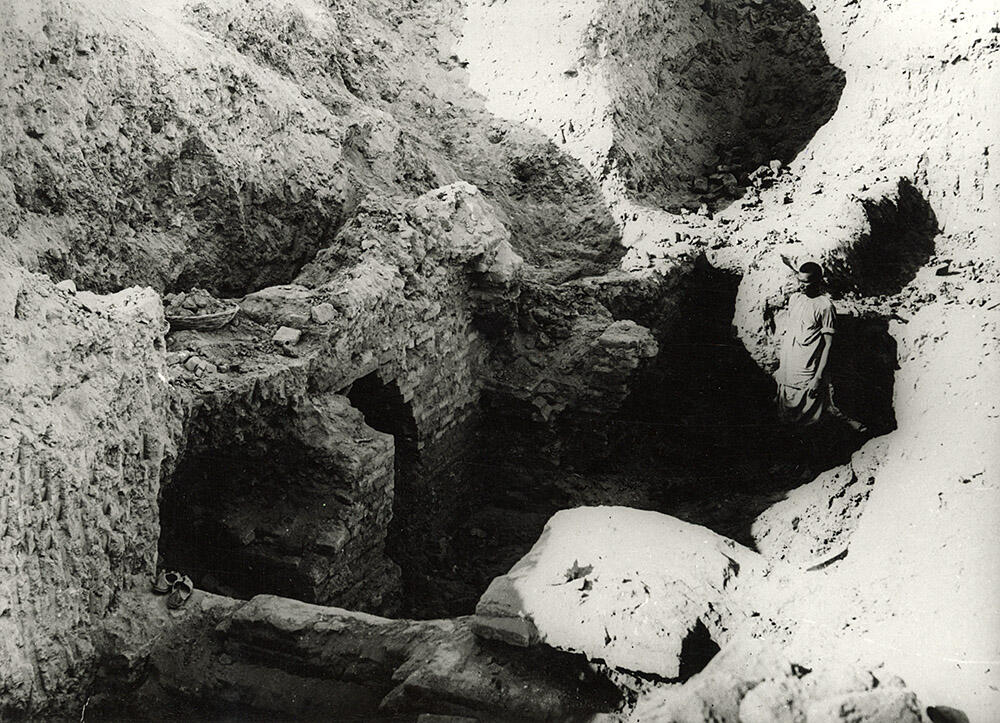"My operations did, indeed, reveal portions of a large brick building, but unfortunately they were found to have been so badly hacked about by brick diggers that it is well nigh impossible to determine its real nature or date, Plate VIII, Photo. No. 2745 [above]. The excavation was rendered extremely laborious by the immense masses of earth that had to be shifted. The first four or five feet were quite barren of any kind of relics, but underneath this level the excavations brought to light a stratum that was thickly strewn with fragments of stone of various sizes, some highly polished, laik [sic like] works of the Maurya period, others rough and coarsely dressed, which might be assigned to the Kushan times."
- Daya Ram Sahni, Annual Progress Report of the Archaeological Survey [of India], Hindu and Buddhist Monuments, Northern Circle for the Year Ending 31st March 1921, p. 10.
"Another trial digging made this year within the Harappa aren was on the mound marked A & B on Cunningham's plan. This mound rises some 65 feet above the surrounding ground, and is the highest at Harappa. On the slopes of this mound a space measuring 55 feet by 25 feet and situated to the west of the “Naugaza tomb" shown in Cunningham’s plan, was excavated to the depth of about 138 feet. The upper stratum yielded nothing, but some four feet beneath the surface Mr. Sahni came upon a mass of stone fragments, some of these bearing the high polish of the Mauryan period, although others were coarsely dressed and perhaps of later date, notably the fragments of an arched window which the Rai Bahadur assigns to the Kushana period. Digging then proceeded to lower strata, and at the depth of thirteen feet revealed the floor of a brick building the walls of which are still standing to a height of about seven feet, with a thickness of three: One of the rooms of this structure must have been a fairly large hall, and another room was traceable, which had however been dug into and its walls removed brick by brick by the villagers."
- John Marshall, Annual Report of the Director-General of Archaeology in India, 1920-21, p. 16-17.
"This view of the lower levels excavated to the west of Baba Noor Shah Wali’s tomb reveal the massive fired brick walls of houses and foundations dating to the Harappa Phase."
- Jonathan Mark Kenoyer, 2021.
[Appendix D] 2745 Area to west of Naogaza's tomb, After excavations
[Original caption?] H Vol. 28 p. 3 Pl. 2745 (West of Naugaza)

